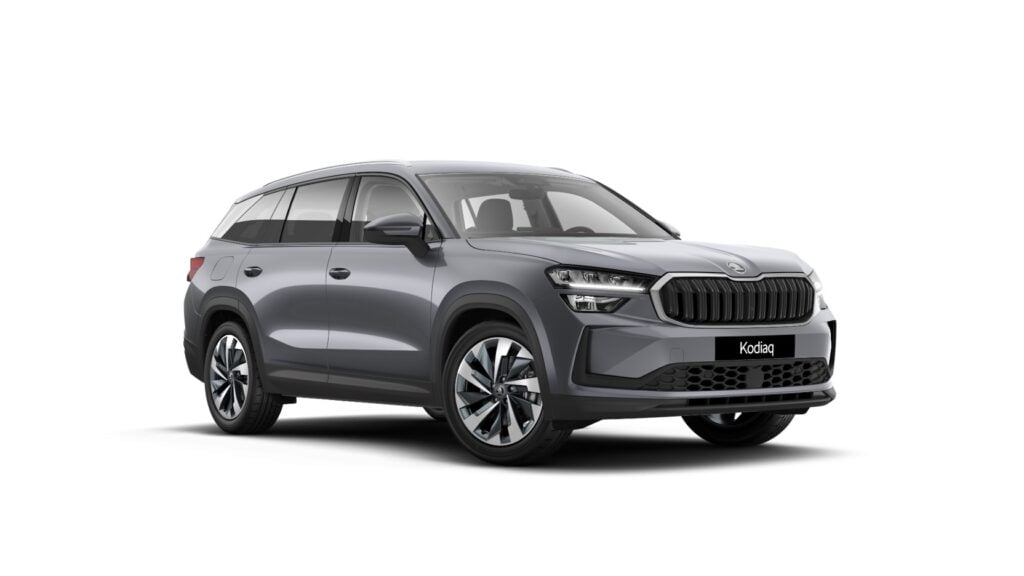
Audi’s new king of the hill, the Q8, will hit the road in January priced from $128,900 before on-road costs, offering a new tech-packed option for four-ring fans who don’t want to leave their creature comforts behind when the sealed road ends.
For now, just the 55 TFSI is on offer but it will be joined in the middle of 2019 by a second 50 TDI which offers identical pricing and specification but swaps the 3.0-litre V6 petrol for a diesel unit of the same displacement and configuration.
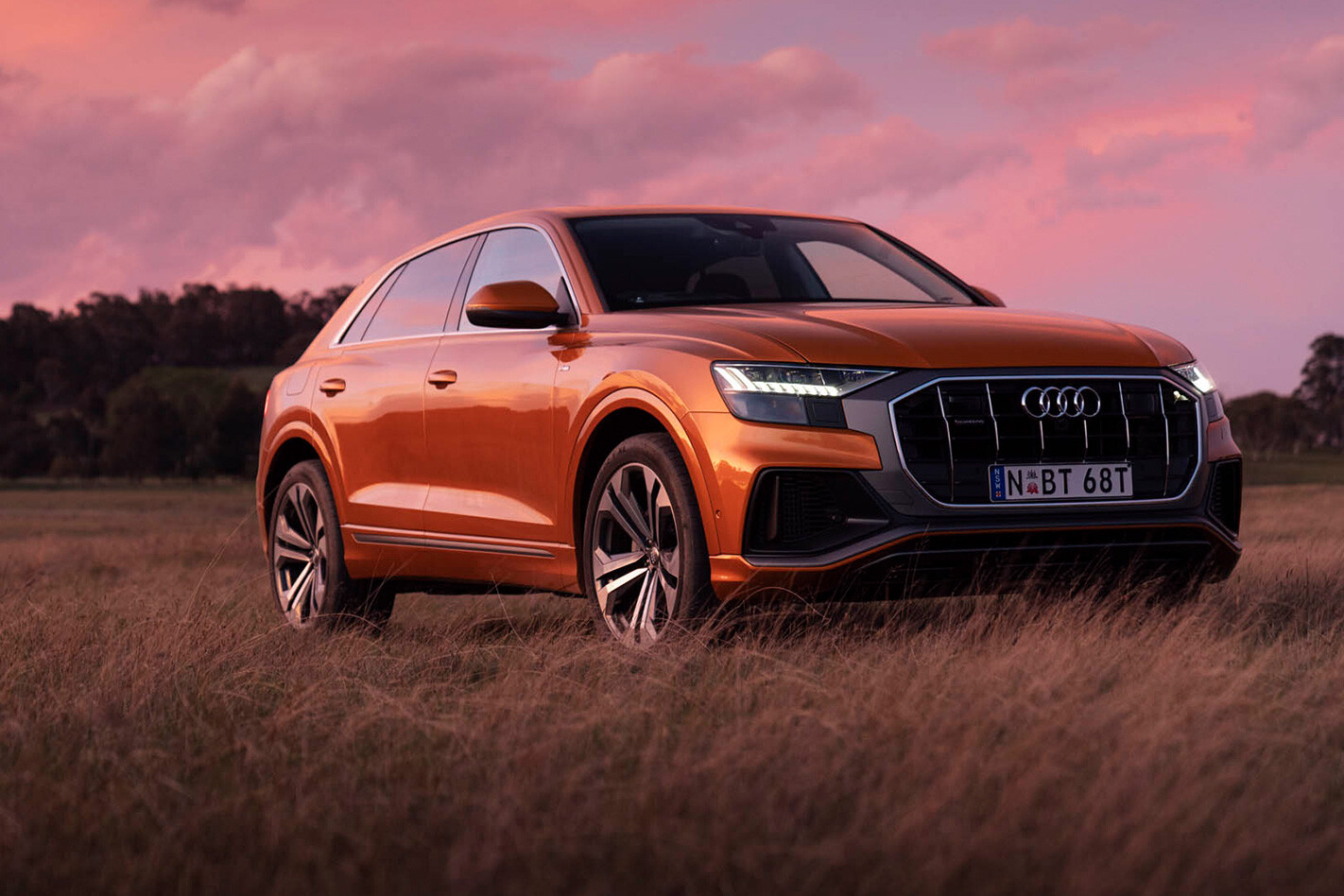
With technology, luxury features and driver assistance systems borrowed from the Audi A8 limo, the Q8 accepts the mantle from the Audi Q7 as the company’s SUV flagship and fills another gap in the Q queue. Only the Q1 and Q4 slots remain unrepresented as Audi builds its defence against arch rivals BMW and Mercedes, and their repertoire of high-riding models.
In the battle for SUV supremacy, the Q8 bumps gloves with Mercedes’ GLE Coupe and the BMW X6, both of which have had a significant head start on the Audi and have already busied themselves polarising opinions with their coupe-esque profiles.
That said, with its luxury focus, Audi will be eying customers who may also be considering a Range Rover Velar or Porsche Cayenne, with which the Q8 shares a chromosome or two.
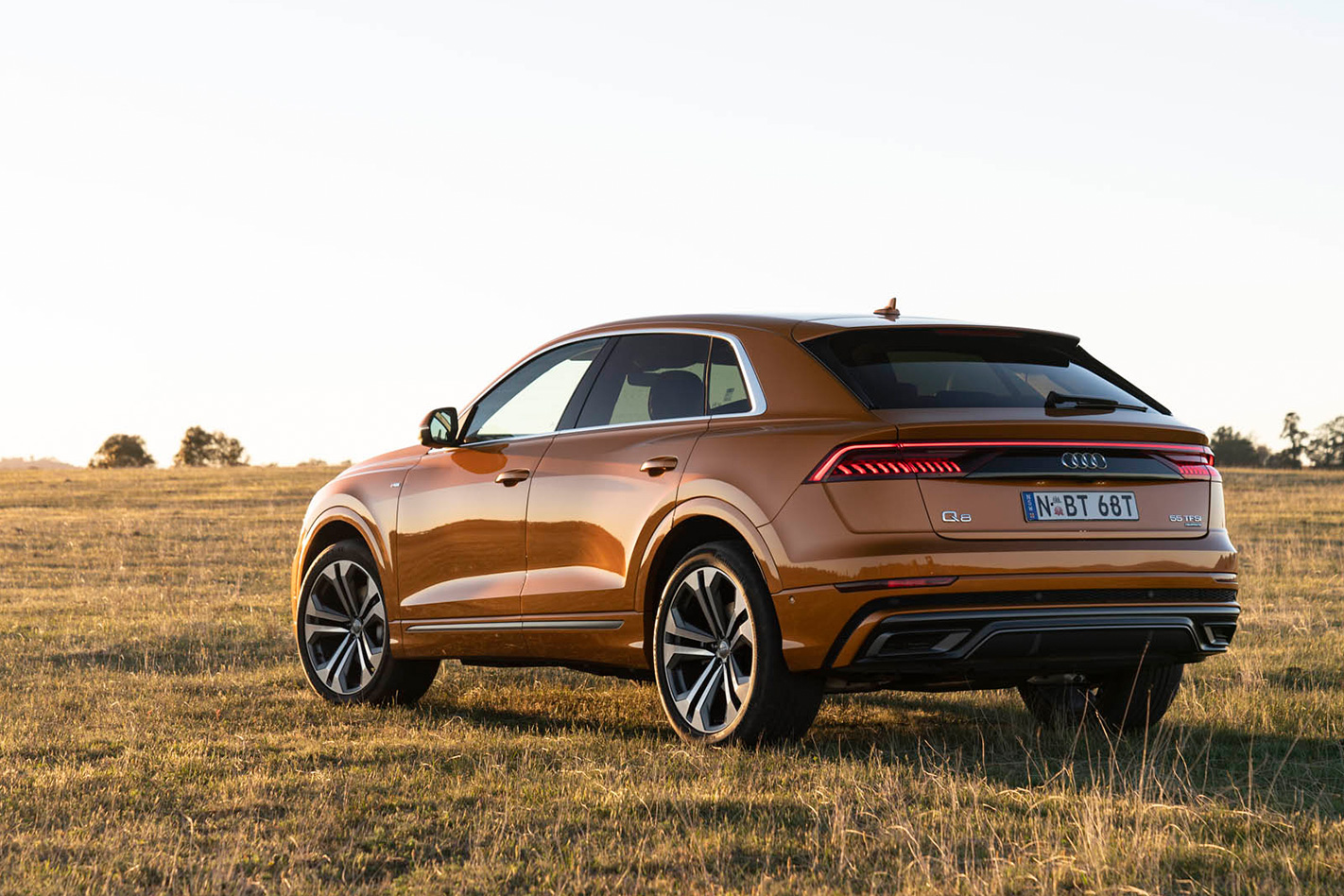
With its circa $130k starting price, the Q8 is landing shells right in Mercedes and BMW’s back yard, with the equivalent GLE Coupe starting at $126,700 and the X6 which costs from $122,200.
The Q2 marked Audi’s first foray into more elegantly profiled SUVs and, while that car might have divided style-savvy audiences, the Q8 wears a less divisive look. At the front end, the ‘single-frame mask’ is perhaps the most expansive yet from the German designer and is filled with a wider-vent grille.
At the tail end a continuous light bar houses LED illumination and is said to be reminiscent of the original quattro sports coupe. Pumped arches impart a more muscular look in addition to the coupe profile headline styling feature. Frameless glass for all doors is another styling touch that brings a more premium feel.
Trading heavily on its technological offering, the Q8 bundles many of the features introduced by the new A8 earlier this year, albeit for a price some $70,000 more affordable than the big sedan’s entry price.
Leading the technological charge is a spread of fully digital screens, which relegates only a few tasks to conventional switches. For the driver, vehicle information is displayed in the proliferating Virtual Cockpit 12.3-inch instrument cluster, but it’s complimented by a pair of central information screens.
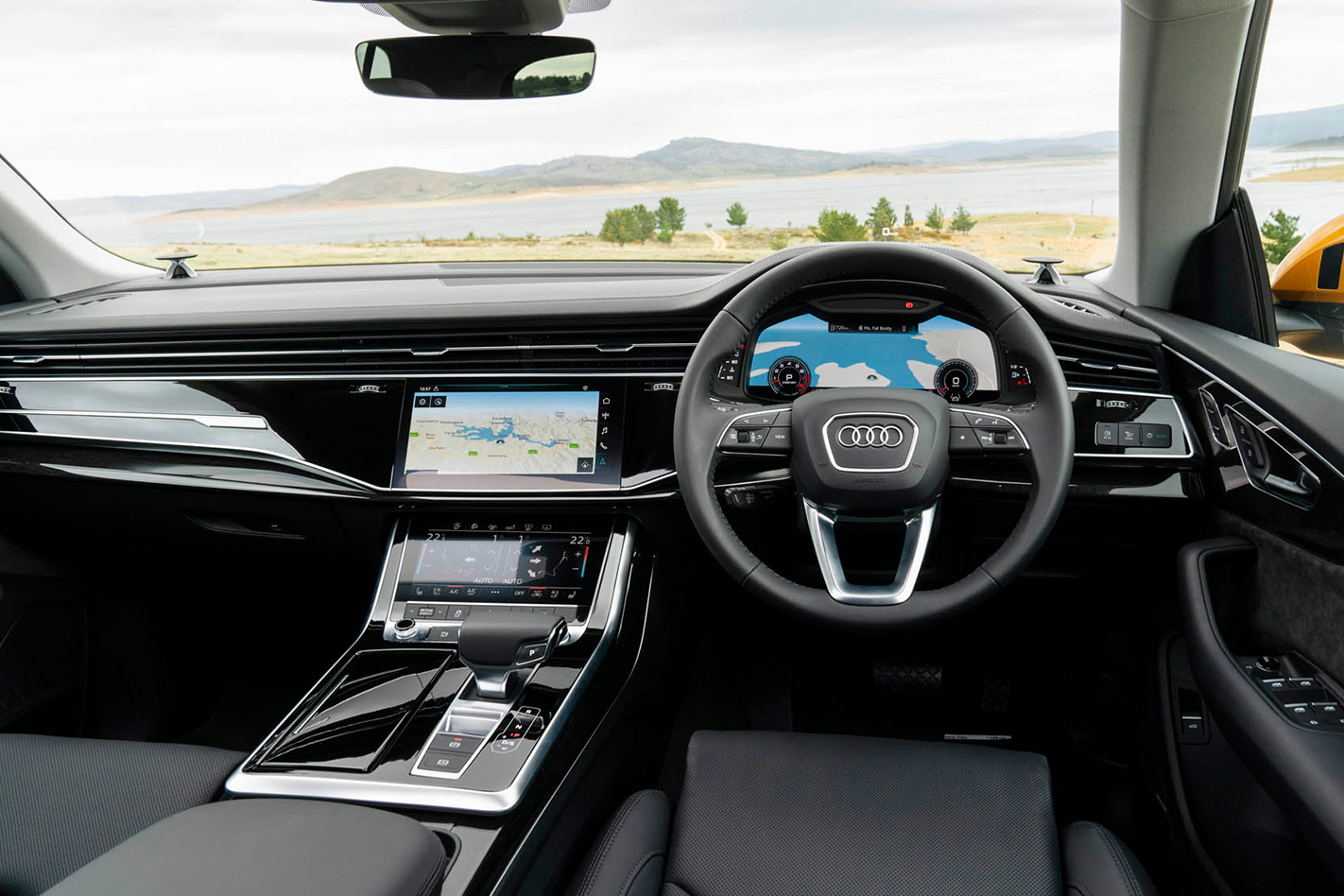
An 8.6-inch lower screen handles most vehicle comfort settings, while the 10.1-inch top unit looks after information and entertainment functions. Both can be customised by relocating application icons in a similar manner to smartphone operation, and pinch and swipe functions will also be familiar to any modern device owner.
Speaking of which, Android Auto and Apple CarPlay smartphone mirroring is also supported.
MMI Touch Response offers users a haptic feedback to acknowledge option selections with a tactile and audible click – another shared feature with the Porsche Cayenne.
Navigation is included as standard and its maps are upgraded for free for five years, although Audi does not yet offer over-the-air updates for the Q8 navigation, and updates will need to be conducted at a service centre.
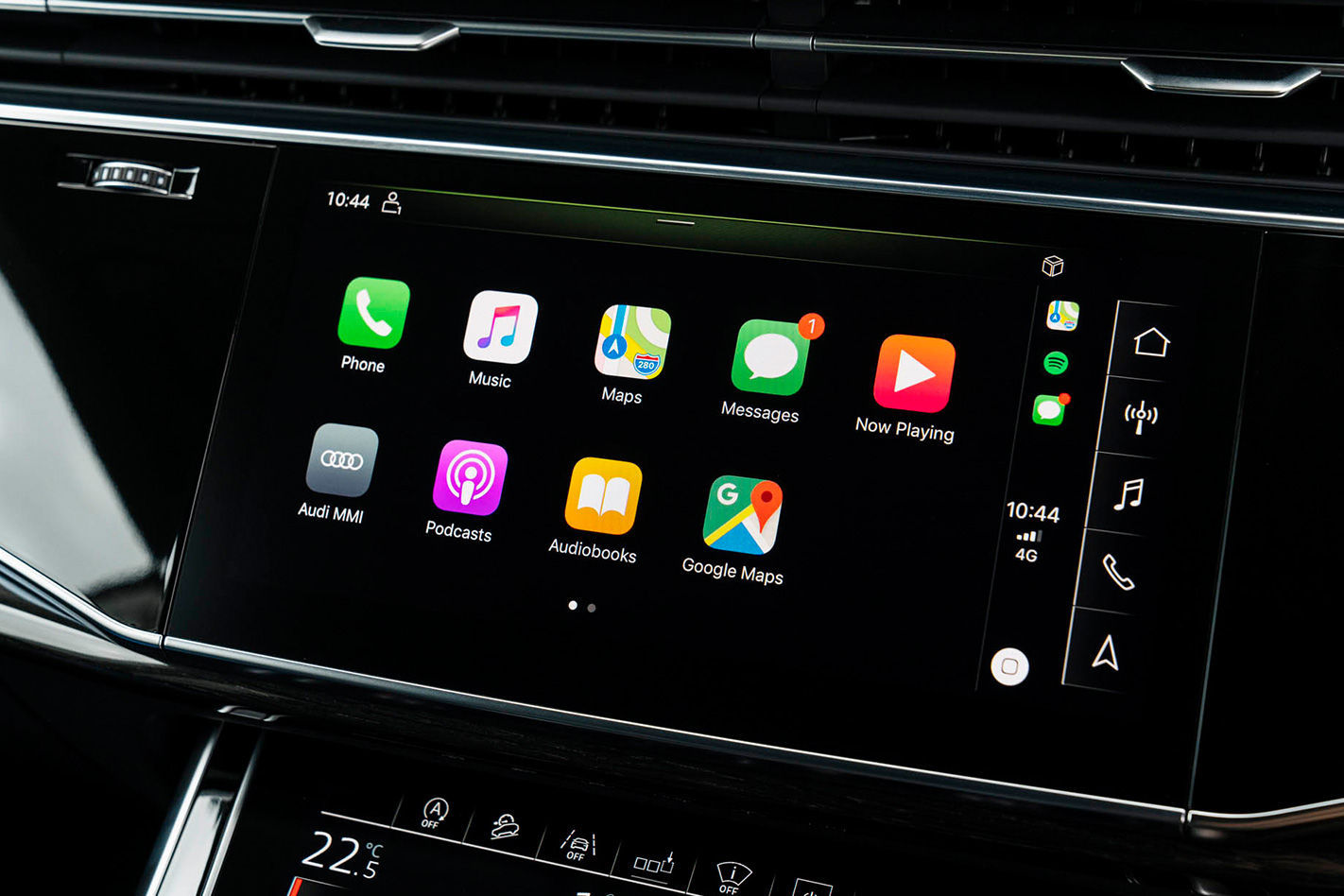
The Q8’s safety systems are also similar to the A8’s. Highlighting the list of driver-assistance and crash mitigation tech is a suite of radar, cameras and other sensors.
Increasingly-common adaptive cruise control and autonomous emergency braking are included, allowing the Q8 to control its own speed and distance from other vehicles from freeway speeds right down to stop-and-start traffic.
The camera array also enables a sophisticated manoeuvring and parking assistance feature. Not only does the system allow a top-down view of the vehicle, but a 3D image presented on the central screen can be manipulated allowing the driver to focus on one particular point of the vehicle when negotiating tight spaces.
Previously Audi has introduced a cyclist protection system which detects approaching cyclists and issues a visual warning if an occupant tries to exit the vehicle, but the system has now been enhanced for the Q8 and actually delays the door handle operation, physically preventing the door being opened into the cyclist’s path.
There’s also the usual selection of head-up display, lane departure, driver fatigue monitoring, speed sign recognition and blind spot monitoring tech as well as airbags for all occupants and a safety cell comprised mostly of aluminium for if a crash is unavoidable.
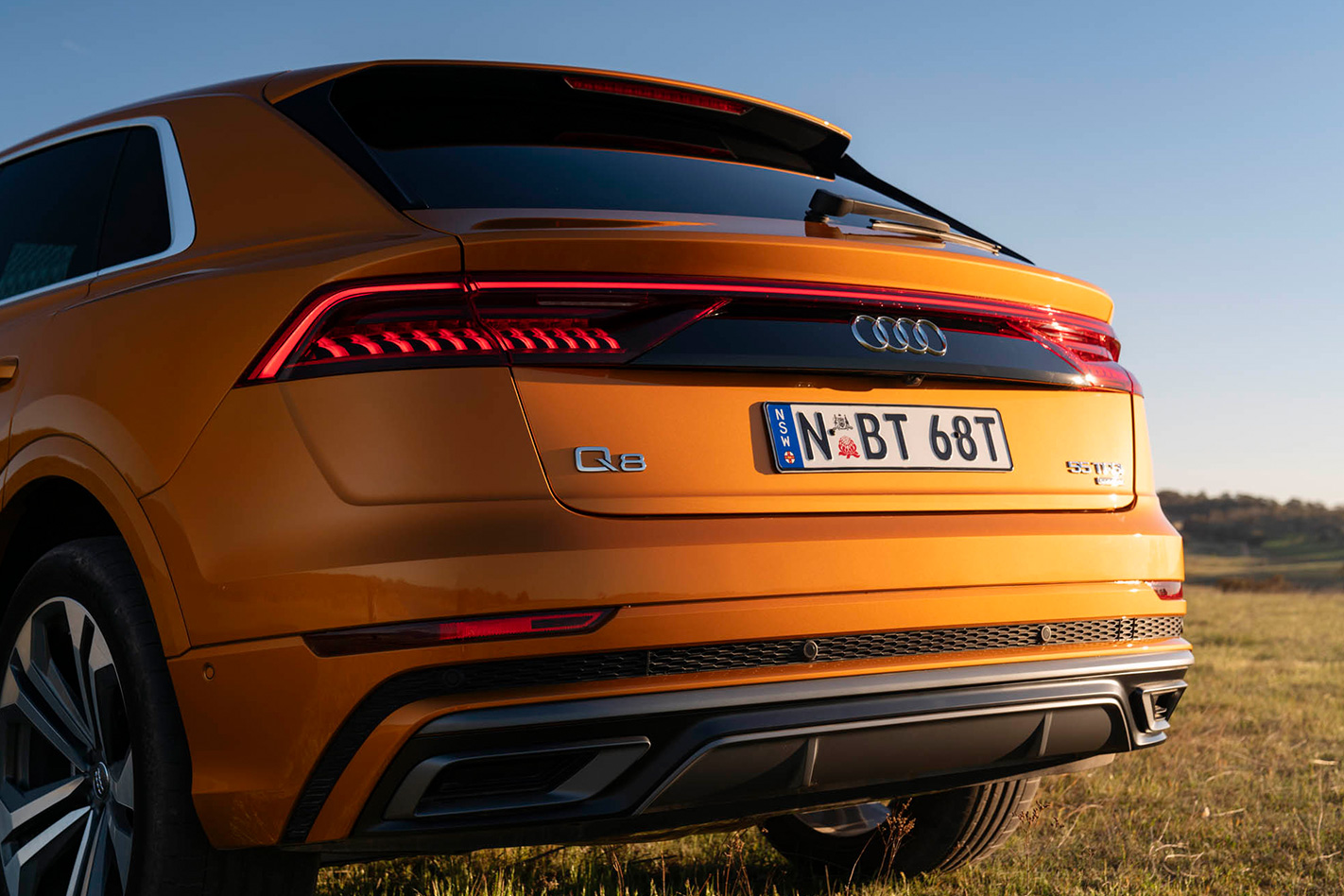
The mix of steel, cast and sheet aluminium allows the Q8 to weigh in at 2145kg. Overall, the model range newcomer is similar in dimensions to the Q7 large SUV with an identical wheelbase of three metres, but is wider at two metres and shorter in height, measuring 1.7 metres.
Powering the 55 TSI is a 3.0-litre turbocharged V6 petrol with 250kW and 500Nm of torque – enough to power it to 100km/h from standstill in 5.9 seconds while consuming 9.2 litres of fuel per 100km/h on average.
Those figures are made possible thanks in part to a 48-volt main electrical system which has a belt-driven starter/alternator at its core. A lithium ion battery is charged by the alternator during braking but can return power to the engine when required to save up to 0.7 litres of fuel per 100km.
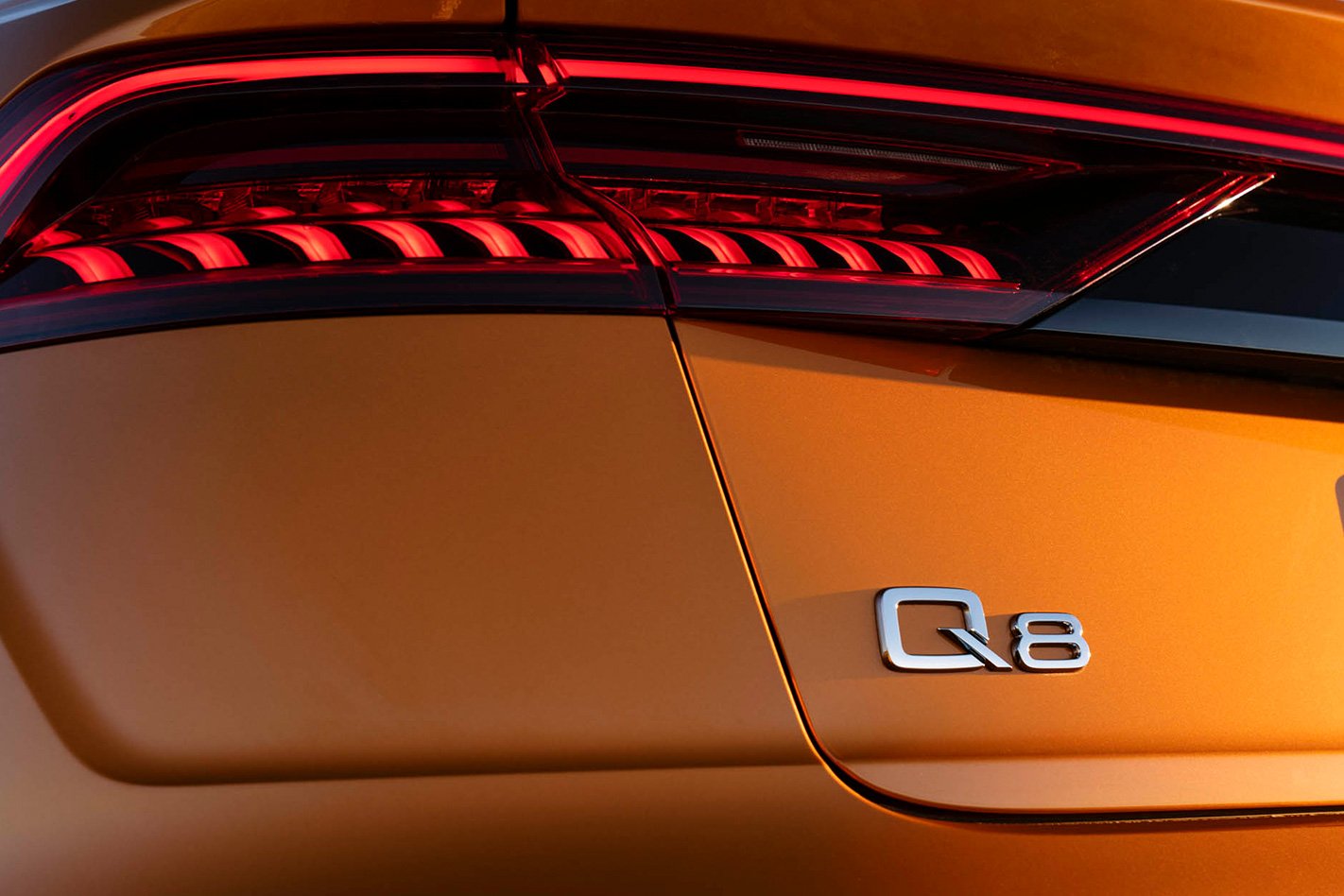
The system does not provide a zero-emissions driving mode like plug-in hybrids and differs from the 48-volt sub-system fitted to the Audi SQ7 which provides power to auxiliary systems and not directly to engine output.
An eight-speed automatic transmission sends power to all four wheels depending on the driving style, terrain conditions and according to the drive select modes.

In addition to the more conventional Auto, Comfort and Dynamic modes found with many Audi models, the Q8 has an additional Offroad setting, which adjusts the behaviour of the all-wheel drive system, increases power steering assistance and raises the suspension for increased ground clearance.
Suspension is multi-link at each corner and supported by steel coil springs with adaptive dampers, but can be upgraded to adaptive air suspension as part of the Premium Plus Package.
The optional bundle costs $11,000 but adds a number of extras picked from Audi customer’s most frequently requested goodies.
The pack upgrades standard 21-inch wheels to 22-inch versions with a different design, all windows get privacy glass, headlights are uprated to HD matrix LED with dynamic indicators, rear passengers are treated to their own touchscreen climate control panel and all occupants benefit from 30-colour LED ambient lighting.
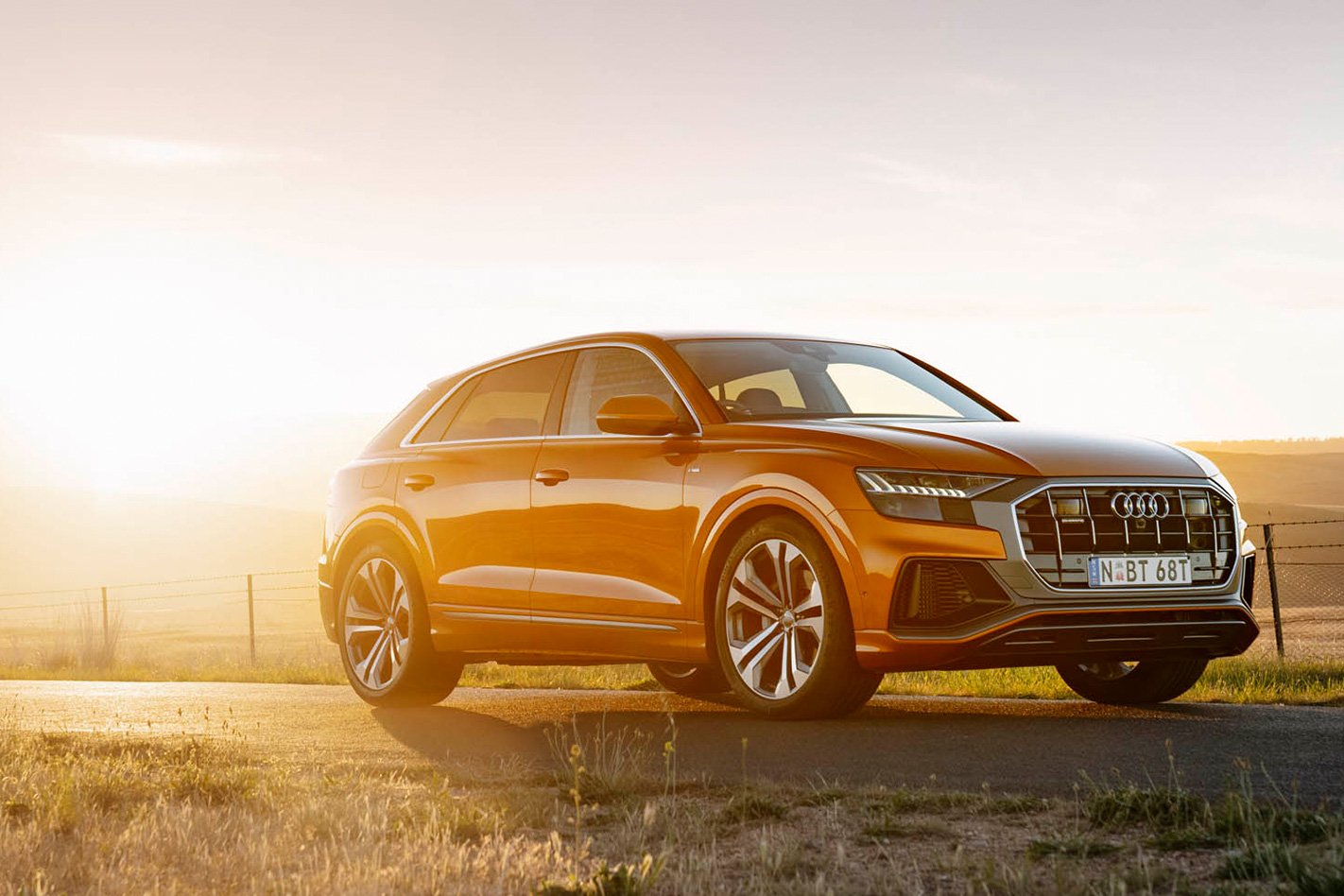
In the premium vein, the Q8 gets the poshest seats from the Q7 as standard fare, along with Valcona high-quality leather upholstery, heating and cooling for the front row, along with the highest level of adjustment and position memory for both front occupants.
Unlike the Q7, the Q8 is strictly a five-seat proposition. The second row splits 40:60:40 to boost boot space from 606 litres to 1755 litres, although a sliding base increases the luggage area by 75 litres without sacrificing any of the rear seats. An electric tailgate is standard and can be opened with a foot swiping motion.




